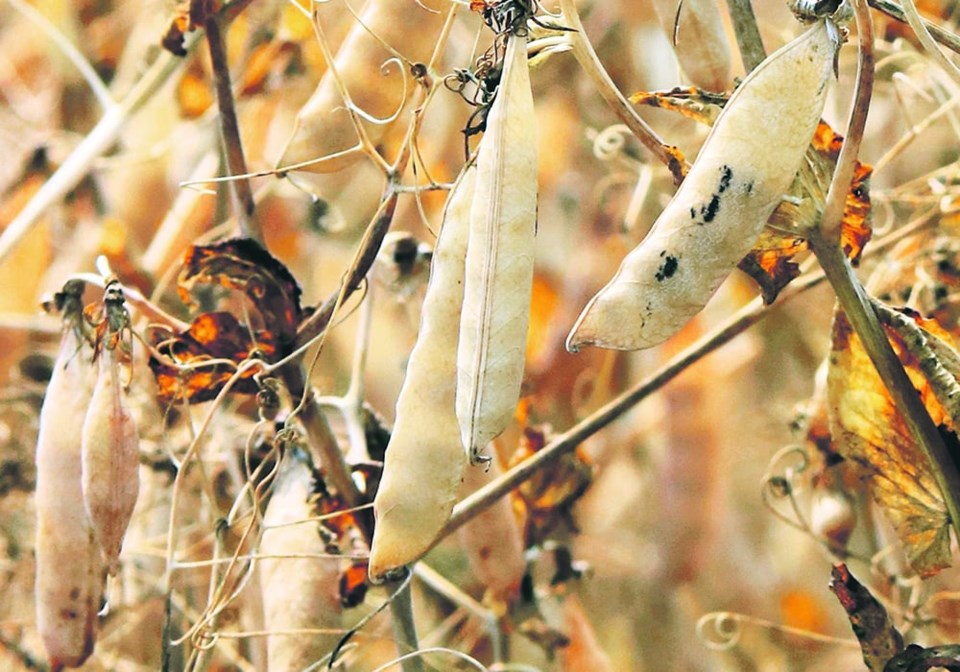SASKATOON — Analysts disagree on whether this will be the year that India drops its yellow pea import restrictions.
There are some early-season concerns for India’s chickpea and lentil crops.
“The acreage will be the same (as last year) but the production will be less because things are not good in India on the climate side,” said Vivek Agrawal, a broker with JLV Agro.
The southwest monsoon, which runs from June 1 through Sept. 30, fell short in the northeast part of the country.
Rainfall was particularly bad in eastern Uttar Pradesh, a state that accounts for one-third of India’s lentil production. It was 29 percent below normal in that half of the state.
Post-monsoon precipitation has been substandard in many key chickpea and lentil growing states.
It was between 12 and 44 percent below normal in Madhya Pradesh, Uttar Pradesh, Maharashtra, Karnataka and Gujarat between Oct. 1 and Nov. 28.
Rajasthan was the exception, where it was 16 percent above normal.
Lentils are primarily grown in two states. Acreage looks like it will be well above normal in Madhya Pradesh and close to average in Uttar Pradesh, according to Rahul Chauhan, analyst with IGrain India.
Chickpeas are more widely grown. Planting is down compared to last year in part due to the government purchasing a “handsome quantity” of last year’s crop from growers.
“We have ample stocks of (chickpeas) with traders, millers and with government,” he said in an email.
Rabi or winter pulse seeding is about half complete.
Conditions could be getting a lot worse. The Indian government feels that a strong El Nino could make its presence felt in January, bringing more hot and dry weather to those key pulse-growing states, said Agrawal.
If India’s chickpea crop is short, he thinks the government will be eager to keep prices in check because 2024 is an election year.
That could prompt an easing of pea import restrictions because yellow peas can be used as a substitute for desi chickpeas.
There is currently an annual quota of 150,000 tonnes on pea imports and they can only be brought in through the Port of Kolkata.
Agrawal thinks the government could relax those restrictions, providing increased import quotas to millers.
“They can allow imports of maybe one million tonnes,” he said.
Chauhan thinks that is highly unlikely. The government will take many steps before reducing pea import restrictions, such as releasing stocks into the market and reducing the import duty on chickpeas.
“Pea import restrictions will only be relaxed if there is any natural calamity in all states, which is not possible,” he said.
Farmers would be unhappy if pea import restrictions were dropped and the government doesn’t want to foment unrest in an election year.Agrawal said there should be good demand for imported lentils due to consecutive pigeon pea crop failures in India.
The country has already imported 800,000 tonnes of lentils from all destinations halfway through the 2023-24 crop year, which is well above the average pace.
Chauhan believes lentil imports will be lower than last year because Indian lentil production will be 200,000 tonnes higher than it was last year due to the increased planting in Madhya Pradesh.
But Agrawal noted that India’s current pigeon pea crop that will be harvested in December will likely be 10 to 15 percent below earlier expectations.
The government is forecasting 3.42 million tonnes of production, which would be in line with last year’s 3.31 million tonnes but nearly one million tonnes below the government’s target.
He noted that Canada will be facing stiff competition from a consistent supply of less expensive Australian red lentils.
Australia is forecasting 1.23 million tonnes of lentil production, down 27 percent from last year’s record harvest but still nearly double the five-year average prior to that.
Contact [email protected]
SASKTODAY.ca is Saskatchewan's home page. Bookmark us at this link.




